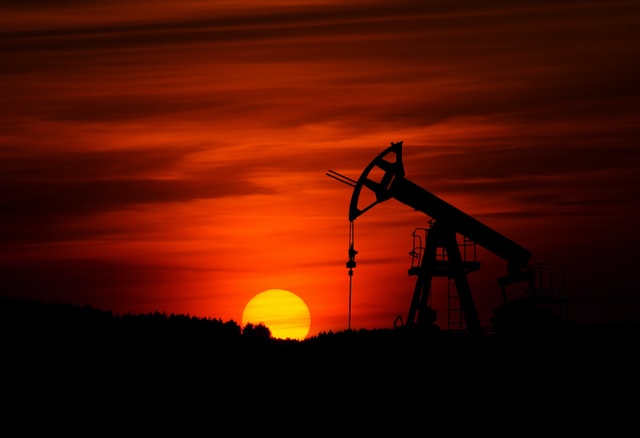The LA Council took steps to gradually stop gas extraction and oil drilling in the US city. Thus, it is looking to tackle health and environment-related issues that stemmed from a sector that aided in creating modern SoCal.
The LA Council voted for a prohibition of new artificial wells to draw oil and commissioned a study to help officials in LA find out the way to stop existing wells over time.
As for environmental justice (EJ) activists, the council vote is a long-fought victory for the non-white communities with low incomes around the well locations. The activists also found it a watershed moment in LA regulations that make the process of extracting gas and oil possible in residential areas.
As per Martha Dina Arguello, who serves as Executive Director at Physicians for Social Responsibility, a community should be no sacrifice area. Arguello also chairs a community group coalition that fights to close down oil wells.
It is known that the wells emit potential carcinogens, including formaldehyde and benzene. Studies have discovered that living around the wells is associated with health issues, including preterm births and respiratory problems.
Despite that, there are oil rigs and storage tanks nestled around residences, youth clubs and schools as well as tucked away behind walls. Alongside health risks, these active locations can bring the noise to residents 24 hours a day.
Petroleum was among the biggest industries in SoCal once. Back then, wells and derricks dotted coastal locations in Santa Barbara, Huntington Beach and other locations. The petroleum sector aided in fuelling the growth of LA in the initial period of the twentieth century. Later, the industry offered jobs to veterans after the Second World War as well as made some of the great scandals and fortunes of Los Angeles in the years before the war.
Los Angeles no longer has the same output as in the past, but city officials state that it has over 1,000 idle or active wells. As for Councilor Paul Krekorian, LA’s oil drilling might have been sensible in the initial days of the twentieth century but is not a lot sensible now. According to Krekorian, LA was a megalopolis at the start of the twenty-first century.
The motion that the Council approved directs city lawyers to draft a mandate prohibiting new gas and oil extraction. Los Angeles will do a study to comprehend whether oil businesses have regained the worth of what they have invested in each oil location.
If businesses have recouped the costs, Los Angeles officials claim that it would simplify shutting down those locations for the US city.
According to California Independent Petroleum Association CEO Rock Zierman, closing local energy creation will put California natives out of jobs, reduce taxes on vital services as well as make LA depend more on imported oil from Iraq and Saudi Arabia. The foreign oil is transported in a tanker to the crowded port in LA. Zierman also stated that crude oil that is made in California adheres to state environmental rules when the imported commodities are exempt. As for Zierman, taking somebody’s property with no compensation, breaches the 5th Amendment in the US Constitution against illegal searches and seizures.
In 2021, the governing body of the County took comparable steps to gradually stop oil creation in unincorporated locations. California is proceeding with the ban on the gas and oil wells within 975 meters of schools, healthcare facilities and homes as well as requiring monitoring of emissions from existing wells in the buffer zones.
Wilmington is home to over 50% of functional oil wells of LA, as per the non-profit organization Communities for a Better Environment. The organization became part of the neighborhood 15 years ago after natives raised concerns over a Warren E&P, Inc., oil drilling location. According to Bahram Fazeli of Communities for a Better Environment, the location is around residences and a field for youth baseball. Fazeli stated that people described it as an extremely unpleasant location, citing complaints of nosebleeds and asthma attacks. Fazeli still regards it as a risk for the community.
An Allenco Energy drilling site in LA’s University Park was associated with reports of headaches, persistent nosebleeds, and foul odors. Last year, California ordered the location to close itself down permanently following years of political and legal wrangling.
LA has faced flak from American activists for how it lacked oversight on the petroleum sector. As per a recent LA Times investigation with the Center for Public Integrity, LA has been inconsistent and slow in making the sector take accountability for unplugged and idle wells.
The new motion asks departments of LA City to create a policy to confirm that:
- The wells are properly plugged and abandoned
- Site remediation is done within 3 to 5 years of the locations ceasing production
As for Food & Water Watch spokesperson Jasmin Vargas, SoCalGas’s Aliso Canyon Natural Gas Storage Facility will not be subject to the law. The location beyond Los Angeles boundaries is notorious for the largest-ever gas blowout that the US has encountered.
The gas leak in 2015 affected the Porter Ranch neighborhood the most. Back then, residents complained of nosebleeds, breathing issues and nausea, and thousands of family members had to leave their locations.
The President of the Council, Nury Martinez, too, brought a motion to make a new office for LA to support staffers as they move away from new technology-affected jobs, including oil and natural gas industry jobs.
As for Martinez, LA cannot take away employment positions from the working class to correct immoral environmental racism acts.
